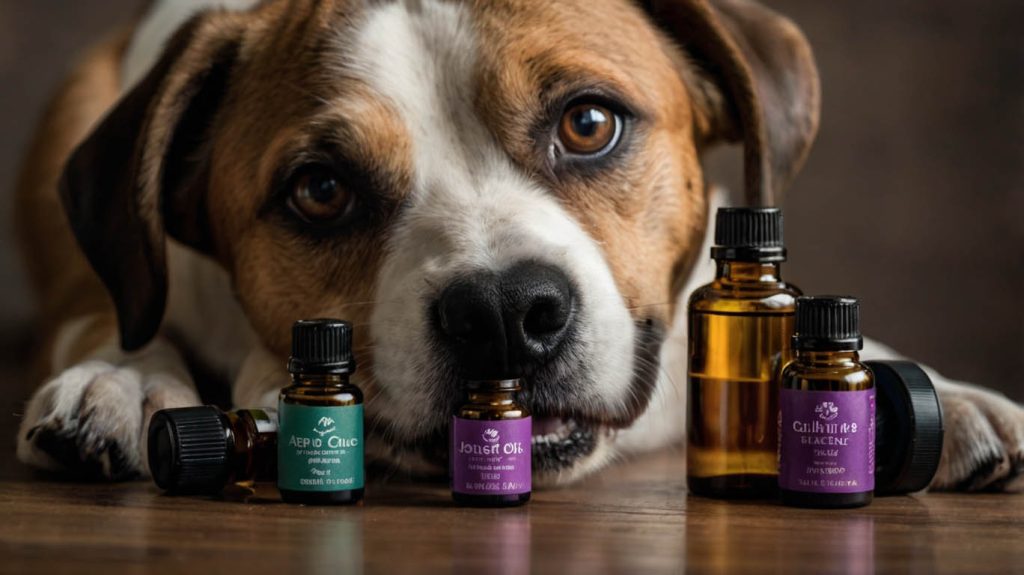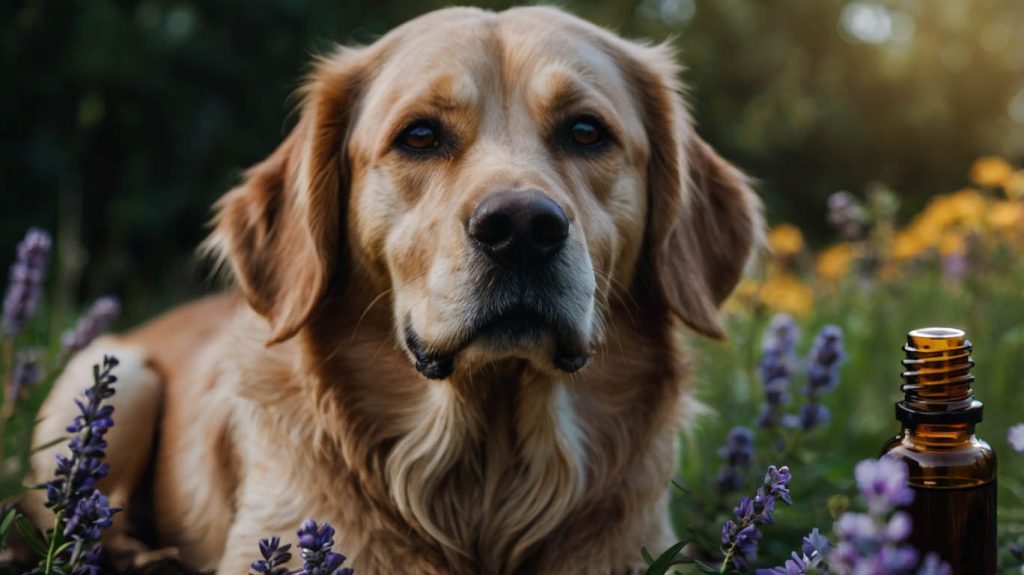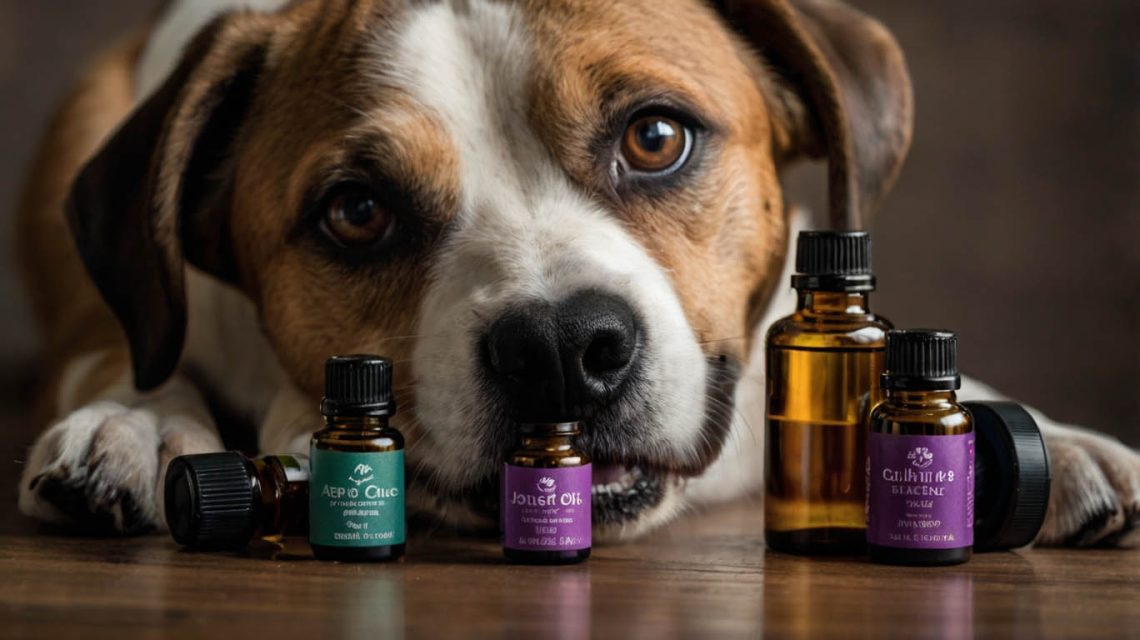Are Essential Oils Good for Dogs? A Vet’s Guide
Sarah scrolled through her social media feed, a warm mug of tea in her hand. Her golden retriever, Max, was snoozing at her feet. An ad popped up for a new essential oil diffuser, promising to fill her home with the calming scent of lavender. “Perfect for relaxation,” it read. A thought immediately sparked in her mind: if it helps her unwind, could it help Max with his occasional storm anxiety? This simple question— are essential oils good for dogs? —is one that millions of pet parents ask every day.
The wellness world has embraced essential oils for their therapeutic aromas and potential health benefits. Consequently, it’s only natural to want to share these benefits with our four-legged family members. However, the answer isn’t a simple yes or no. While some oils can offer benefits when used with extreme caution, many pose a significant danger to our canine companions.
This comprehensive guide will walk you through the complex world of essential oils and your dog. We’ll explore the risks, identify the safer options, and provide clear guidelines to ensure you’re making choices that prioritize your dog’s health and safety above all else.
Why Ask “Are Essential Oils Good for Dogs?” The Trend and the Truth
The desire to find natural solutions for our pets’ ailments is stronger than ever. From anxiety to skin irritations, owners are looking for alternatives to conventional medicine. This trend has placed essential oils in the spotlight. Before we proceed, it’s crucial to understand a fundamental truth: a dog is not a small, furry human. Their biology is profoundly different, which is why we must carefully consider if are essential oils good for dogs.
What is safe and beneficial for you can be toxic for your pet. Therefore, understanding these differences is the first step toward responsible pet ownership in the age of aromatherapy.

Understanding the Risks: Are Essential Oils Good for Dogs’ Unique Biology?
A dog’s body processes substances differently than ours. This is the primary reason for caution. Their smaller size, faster metabolism, and unique physiology make them much more sensitive to the potent compounds found in essential oils.
The Dangers of Phenols and Other Compounds
First and foremost, many essential oils contain compounds called phenols. Dogs’ livers have a limited ability to metabolize these phenols efficiently. When a dog is exposed to them, either through inhalation, ingestion, or skin absorption, these toxic compounds can build up in their system. This accumulation can lead to liver damage, respiratory failure, seizures, and even death. Oils high in phenols, like tea tree, oregano, and thyme, are particularly hazardous.
Your Dog’s Powerful Nose: A Blessing and a Curse
Furthermore, a dog’s sense of smell is estimated to be 10,000 to 100,000 times more powerful than a human’s. A scent that you find pleasantly mild can be overwhelmingly intense and stressful for your dog. Imagine being trapped in a small room with someone wearing an entire bottle of perfume—that’s what a strong diffuser can feel like to your canine friend. This sensory overload can cause respiratory irritation, behavioral stress, and severe discomfort. The question of are essential oils good for dogs must account for their sensitive respiratory systems.

Safe Essential Oils for Dogs: A Cautious Guide
While the risks are significant, some essential oils are generally considered safer for dogs if they are used correctly. “Correctly” is the key word here, and it always involves three critical rules:
- Always consult your veterinarian first.
- Always use 100% pure, therapeutic-grade oils from a reputable source.
- Always dilute oils heavily with a carrier oil.
Here are a few oils that, under veterinary guidance, may have a place in your dog’s wellness routine.
Lavender Oil for a Calmer Dog?
Lavender is perhaps the most well-known oil for its calming properties. Studies have shown it can reduce anxiety and stress in humans, and anecdotal evidence suggests it may have a similar effect on some dogs. If your vet gives you the green light, a heavily diluted lavender oil might be used to create a more relaxed environment.
- Potential Use: Easing travel anxiety or stress during thunderstorms.
- Method: Primarily through passive diffusion in a well-ventilated area where the dog can leave if they choose.
Chamomile Oil: A Soothing Option
Similar to lavender, chamomile (specifically Roman chamomile) is known for its gentle, calming effects. It also has anti-inflammatory properties. When properly diluted, it can sometimes be used to soothe minor skin irritations.
- Potential Use: Calming nerves, soothing irritated skin (with vet approval).
- Method: Heavily diluted and applied to a small test patch of skin, or used in a passive diffuser.
Frankincense Oil: An Earthy Ally
Frankincense is celebrated for its anti-inflammatory and potential immune-supporting properties. It’s one of the safer oils for dogs, but like all others, it demands respect and proper dilution. Some holistic veterinarians use it as part of a broader plan for dogs with certain health conditions. Still, wondering are essential oils good for dogs like Frankincense? The answer remains: only with professional guidance.
Toxic Essential Oils: What Every Dog Owner Must Avoid
This section is non-negotiable. The following essential oils are toxic to dogs and should NEVER be used on or around them. Exposure can cause severe illness or be fatal.
- Tea Tree (Melaleuca): Highly toxic. Can cause depression, loss of coordination (ataxia), paralysis, vomiting, and liver damage.
- Pennyroyal: Highly toxic. Known to cause liver failure and is particularly dangerous.
- Pine Oils: Can cause skin irritation, vomiting, drooling, and damage to the central nervous system and liver.
- Wintergreen: Contains methyl salicylates (similar to aspirin). Can cause aspirin toxicity, leading to vomiting, and liver and kidney failure.
- Cinnamon: Can irritate the skin and mouth, and if inhaled or ingested, can cause low blood sugar, liver disease, and changes in heart rate.
- Peppermint: Can cause significant gastrointestinal upset and issues with the central nervous system.
- Sweet Birch: Similar to Wintergreen, it contains methyl salicylates and is toxic.
- Citrus Oils (in high concentration): Can cause skin irritation and, if ingested, lead to stomach upset and nervous system depression.
- Eucalyptus: Can cause drooling, vomiting, diarrhea, and depression.
- Ylang Ylang: Can cause difficulty breathing, weakness, and vomiting.
This is not an exhaustive list. If an oil isn’t on the “safer” list, you should assume it’s dangerous until you have confirmed otherwise with your veterinarian.
The Right Way to Use Oils: Are Essential Oils Good for Dogs via Diffusion?
If your veterinarian has approved the use of a specific, safe essential oil, the method of application is paramount.
Using an Essential Oil Diffuser Safely
Active diffusers that pump a mist of oil and water into the air are the most common type. If you use one, you must take precautions.
- Ventilation is Key: Only use a diffuser in a large, well-ventilated room.
- Provide an Escape Route: Always keep the door open so your dog can leave the room if the scent is overwhelming them.
- Use Sparingly: Use only 1-2 drops of a dog-safe essential oil.
- Observe Your Dog: Watch for any signs of distress, like sneezing, coughing, or agitation. If you see any, turn off the diffuser immediately and move your dog to fresh air.
- Consider Passive Diffusion: A safer alternative is a passive diffuser, like a reed diffuser or a terracotta stone, placed in an area your dog can’t reach. It provides a much gentler, less concentrated aroma.
Is Topical Application a Good Idea for Dogs?
Topical application is much riskier than diffusion because the oil is absorbed directly into the bloodstream through the skin. Furthermore, dogs are likely to lick the area, leading to ingestion.
If, and only if, a veterinarian has specifically instructed you to apply an oil topically for a skin issue, you must:
- Dilute, Dilute, Dilute: A safe dilution ratio for dogs is typically 1 drop of essential oil to at least 50 drops of a carrier oil (like coconut or jojoba oil).
- Avoid Sensitive Areas: Never apply oils near your dog’s eyes, ears, nose, mouth, or genitals.
- Prevent Licking: Use an e-collar or cone to prevent your dog from ingesting the oil while it absorbs.
Never add essential oils to your dog’s food or water. Internal use is extremely dangerous.
Spotting Trouble: Symptoms of Essential Oil Poisoning
Knowing the signs of essential oil toxicity can save your dog’s life. If you have been using essential oils and notice any of the following symptoms, contact your veterinarian or the Pet Poison Helpline immediately.
- Drooling or excessive salivation
- Vomiting and/or diarrhea
- Lethargy, depression, or weakness
- Wobbliness or difficulty walking (ataxia)
- Muscle tremors or seizures
- Coughing, wheezing, or difficulty breathing
- Pawing at the face or mouth
- Redness or burns on the skin, lips, or gums
Time is critical in cases of poisoning. Do not wait to see if your dog gets better.
The Final Verdict: Are Essential oils good for dogs?
So, let’s return to Sarah and Max. Could a little lavender help with his storm anxiety? Perhaps. But using it without understanding the risks could cause him far more harm than a passing storm ever could.
Ultimately, the answer to “are essential oils good for dogs?” is this: they carry significant, potentially fatal risks that, for the average pet owner, often outweigh their unproven benefits. While a select few oils may be beneficial under the strict guidance of a veterinarian who is knowledgeable about aromatherapy, they should never be used casually. The potential for misuse is simply too high.
Your dog relies on you to be their advocate and protector. Their health and safety should always be the top priority.


